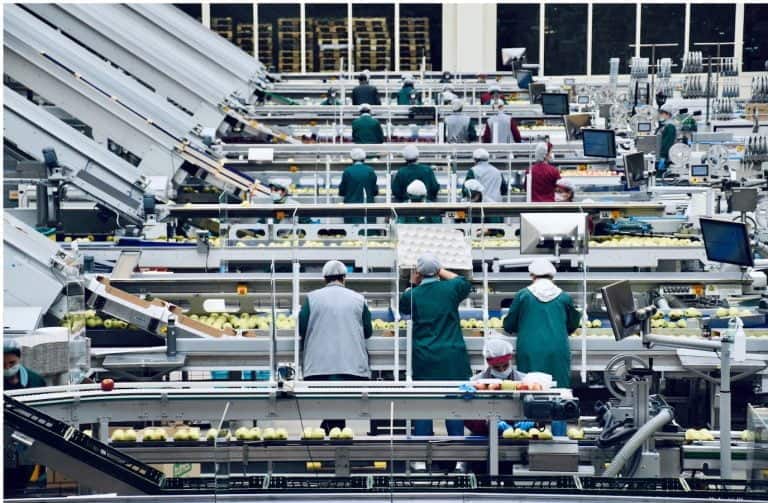Hyper Automation overview.
Table of Contents
ToggleIf you have been following the latest trends in the technology industry, or if you are an autonomous specialist, you might have come across the term “Hyper Automation”. It has been placed at the forefront of Gartner’s Top 10 Strategic Technology Trends for 2020. Besides, recently, it has gained a lot of attention and interest among experts who are dealing with emerging technologies.
With the rise of revolutionary technologies like Artificial Intelligence (AI) or Robotic Process Automation (RPA), we have experienced a shift in the industry that is affecting business processes. Moreover, the year 2020 has marked as the beginning of the fourth industrial revolution in which automation will be moved to another level, where automation will acquire more intelligence than ever before – that’s popularly known as Hyper automation.
Automation V/S Hyper automation
Before we move ahead and understand the concept of hyperautomation, let’s explain automation and its effect on Hyperautomation. Automation is the technology in which a process or task or procedure is performed with minimum human assistance. It is done to improve the reliability, speed, and efficiency of tasks that were being performed by humans previously. For instance, before some decades, if we wanted to have our passbook printed, it was essential for us to visit the branch and there an employee would write all the transactions in your passbook manually. Then there was the invention of printers where bankers used to print passbooks for you, but now all we have to do is take our passbooks and place them in the Self Service Passbook Printers which automatically print all the transactions and even flip pages in the process. All thanks to automation.
On the other hand, hyperautomation is not more than the blend of various technologies that will move end-to-end process automation under an intelligent and unified system of an organization.
With technologies like Intelligent Business Process Management (iBPMS), Robotic Process Automation (RPA), ML, and AI, it will become an application that will streamline and orchestrate as many activities, tasks, and processes as possible. It is adopting automation technologies as a synergy of powers instead of using just one.
It also automates several aspects of decision-making throughout the enterprise with the help of big data. Hyperautomation also enables the modern workforce, leverage AI to enable end-to-end automation, share crucial insights into Return On Investment (ROI) from automation, and transform business and IT alignment. Moreover, in the future, hyperautomation will be capable of replacing human workers and provide better opportunities and promotion for humans.
Hyperautomation will also reduce operational costs and errors. With machine learning, it helps the enterprise to learn from past experiences and mistakes and improve performance and production. It goes far beyond the RPA that simply propagates human tasks. It is there to fix the gap left before by RPA and allows organizations to automate complex processes where human intervention was required. Hyperautomation has changed the scope of automation from single tasks to knowledgable work to drive stunning outcomes for businesses.
What Comprises Hyperautomation?
As I have already mentioned earlier in the blog, hyperautomation cannot work with a single automated tool and hence requires several tools together to work without any assistance from humans. So let’s check how many tools are being used for it and what they are going to help an organization with!
- Robotic Process Automation (RPA)
RPA is a technology that enables any organization or individual to configure computer software or robot to imitate and combine the actions of humans interacting within a digital device or system to complete a process for the business. With RPA, it becomes easier to capture data and manipulate apps as humans would do. It interprets, trigger responses, and communicates with different systems to perform numerous tasks repetitively. When blended with other technologies for hyperautomation, we will be able to see more intelligent and extended devices or robots in the future.
- Intelligent Business Process Management Suites (iBPMS)
iBPMS combines business process management or BPM with technologies like AI to assist businesses in dynamically automating end-to-end processes. If there is a requirement to collect, share, or store data, it will trigger the following steps automatically. It enables automation of complete workflow rather than focusing on a single task.
- AI/Machine Learning
AI or artificial intelligence allows machines to think without any interference from humans and make their own decision. The core purpose of AI is to develop software or bots that have the power to think just like humans. ML or Machine Learning is a subset of AI that utilizes learning algorithms that enables them to learn and improve from previous experiences. It not only means to program a car that can obey traffic lights but it also enables cars to learn and exhibit from other cars and its own experience of driving to decrease the number of accidents on the road. So, as a part of hyperautomation, it will be one of the most crucial technologies required to help devices learn and think before performing according to the workflow.
NPL is a part of artificial intelligence that allows computers to understand, interpret, and manipulate natural human language. It helps in advancing human-to-machine communications. One of the most known examples of NLP and AI is nonetheless – Alexa from Amazon that hears your command convert it into machine language and provide you with the desired outcome. NPL in the hyperautomation will help in making a huge difference when it comes to the intelligence part.
- Optical Character Recognition
OCR is the electronic conversion of images of typed, printed, or handwritten text into machine-readable text. It can be achieved either by scanning the document, from a photo of the document and so on. For example, CamScanner, a software that allows the person to scan the documents with the help of their phone camera and convert them into texts that can be edited according to their needs.
In hyperautomation, OCR can help advanced machines or robots to automate the process of capturing data from documents and analyzing it to take the required actions while handling the task.
- Advanced Analytics
Having data is one thing, accessing it another, so is understanding and analyzing it. But when the data can be visualized, that’s called mastery. Visualizing the data actually helps in unlocking invaluable insights for the enterprise while giving a better competitive opportunity.
Advanced analytics is an autonomous or semi-autonomous examination of content or data using sophisticated tools and techniques to uncover in-depth insights, generate recommendations, and to do predictions. It gives organizations the power to perform advanced statistics like “what-ifs” calculations.
One of the most renowned examples of advanced analytical tools is Data Studio by Google. It can be a bit hard to master but the efforts that one can put there are worth it. With Data Studio, you can create informative yet stunning visualization reports for workers, clients, and the leadership team.
Moreover, with advanced analytics, an organization can decide which of its operations will be better for future aspects. So the blend of advanced analytics with hyper automation will indeed be valuable.
How Does Hyperautomation Work?
Three major components of hyperautomation are – Automation, Orchestration (It is the automated management, configuration, and coordination of computer systems, services, or applications), and most importantly Optimization. If any enterprise wants to get the hyperautomation strategy to take off it’s essential to have a strong automation foundation. It can conclude RPA for basic automation tasks, automation solutions to accommodate different departments or teams, or data warehousing.
Automation tools always stay atop of Orchestration tools then along the line AI and ML is introduced which advanced the automation and helps an organization to:
- Implementing changes to prevent failures
- Identify missed opportunities for automation
- Rapidly optimizing processes
- Develop innovative new processes
- Automating processes that were manual before
Advantages that will come with Hyper automation
Hyperautomation will come with several unexpectedly positive advantages for your organization while making your work easier. Some of the advantages it can offer are as follows:
- Automated Process
Hyperautomation will automate both repetitive processes and knowledge-based work to enhance efficiency and overcome errors.
- Increased Team Collaboration
A major accomplishment of hyperautomation is a better collaboration among team members. It engages everyone in the organization in the overall transformation to benefit customer satisfaction and experience.
- Better Productivity
The productivity of a business with hyperautomation will become faster than ever as the bots will help human employees to carry out different tasks with ease.
- Instant Insights
To optimize performance and reduce risks, hyperautomation can provide instant yet accurate insights.
Conclusion
Overall, it can be said that Hyper automation exists only for one reason – to make our tasks easier and efficient. The bots that will be designed by hyper automation will improve accuracy and productivity to improve the entire business process. With the rise of hyper automation, knowledgeable employees will be released from being monotony and will feel more valued. Besides, they will be engaged in more valuable work. So get ready to unlock more opportunities for automation through hyperautomation. Furthermore, robots are not here to take away our jobs, they are here to offer us promotion.
If you need IT consultation then you can also contact us anytime from anywhere with ease!





